Essential Ms. Marvel, v. 1
Collects: Ms. Marvel #1-23, Avengers Annual #10, Marvel Super-Heroes Magazine #10-1 (1977-9, 1981, 1992)
Released: January 2007 (Marvel)
Format: 512 pages / black and white / $16.99 / ISBN: 9780785124993
There’s not much of a way to sugarcoat it; the Essential Ms. Marvel, v. 1 is a collection of ‘70s mediocrity.
I mean that in the best way, of course; it’s not bad enough to offend, nor is it good enough to truly entice. It falls in the same category as the Essential Iron Fist or Essential Nova. The former collection is an apt comparison in more than one way; although Ms. Marvel was created by other hands, Ms. Marvel is the work of Chris Claremont. Like Iron Fist, Claremont rode Ms. Marvel to cancellation at the same time he was making X-Men a sales juggernaut. In fact, his work with Ms. Marvel begins at about the time Iron Fist ends.
 Early Claremont is the main draw here. With eight pencillers in 23 issues, there are frequent changes in art styles, although Jim Mooney provided art for ten issues over a couple of stints. The few guest stars are second tier, and although the established villains in the book are occasionally better than average (MODOK, AIM, Scorpion), there is plenty of dead weight in the form of Grotesk, Tiger Shark, and the Faceless One.9 Just as Ms. Marvel was wrapped up in an Avengers Annual and an issue of X-Men, Claremont wraps up a storyline from the even more obscure Supernatural Thrillers #10-15. (Why, I don’t know.) The new villains are mostly crap: Destructor, the reptilian People, two unidentified aliens. Except …
Early Claremont is the main draw here. With eight pencillers in 23 issues, there are frequent changes in art styles, although Jim Mooney provided art for ten issues over a couple of stints. The few guest stars are second tier, and although the established villains in the book are occasionally better than average (MODOK, AIM, Scorpion), there is plenty of dead weight in the form of Grotesk, Tiger Shark, and the Faceless One.9 Just as Ms. Marvel was wrapped up in an Avengers Annual and an issue of X-Men, Claremont wraps up a storyline from the even more obscure Supernatural Thrillers #10-15. (Why, I don’t know.) The new villains are mostly crap: Destructor, the reptilian People, two unidentified aliens. Except …
Except Deathbird and Mystique. Deathbird is an alien cypher working for MODOK, but Mystique is a big player with a mad-on for Ms. Marvel. (Claremont’s predilection for long-dangling plotlines don’t tell us why during Ms. Marvel; in the Marvel Super Heroes Magazine reprinted after the Ms. Marvel issues, Destiny reveals she’s predicted Ms. Marvel will harm Rogue, Mystique’s stepdaughter.) For fans of Mystique, it is interesting to see her humble and obscure beginnings.
Also interesting are the two issues of Marvel Super Heroes Magazine. #10 would have been Ms. Marvel #24; the completed cover for #24 is included. #11 is a condensation of Claremont’s plans for Ms. Marvel’s non-Avengers career before Rogue steals her powers, including scraps with the Brotherhood of Evil Mutants and the Hellfire Club. It’s too condensed to be enjoyable, but it’s good to see Claremont’s intentions, and I appreciate Marvel reprinting the two relatively obscure ‘90s anthology issues. (It has some quintessentially ‘90s art that is a jarring shift, though.) Also included is Avengers Annual #10, famous for Rogue’s debut but included here because it shows Carol dealing with her lost powers and memories and excoriating the Avengers for letting her be mind controlled and abducted by the son of Immortus in Avengers #200 (not included in Essential Ms. Marvel, presumably because of page constraints).
This is Claremont, through and through. A powerful female character, some verbal tics and a great deal of unnecessary verbiage, and several mind control plots. For those who love the Claremont of the ‘70s, this book is well worth your time. For the rest of the world, it’s a bit more missable.
Rating: ![]()
![]() (2 of 5)
(2 of 5)
Labels: 2, Chris Claremont, Essentials, Jim Mooney, Marvel, Ms. Marvel





 If there’s anything bad to say about this book, it’s the art — well, the number of different artists, at least. Any one style could have served the book, and two could have been tolerated. But perhaps to commemorate v. 4 of She-Hulk, there are four different pencilers in the space of seven issues: Will Conrad, Paul Smith, Ron Frenz (breakdowns, with finishes by Sal Buscema), and Rick Burchett. The Frenz / Buscema collaboration is my favorite — it appeals to my Buscema nostalgia — but Smith and Burchett fit the series quite well, being slightly reminiscent of Juan Bobillo. There’s nothing wrong with Conrads’s work, but it has a fiddly “realistic” look that I’ve never cared for. I will say I’m not fond of Greg Horn’s covers for this series, even if he’s lowered his cheesecake / port ratio for the series by quite a bit.
If there’s anything bad to say about this book, it’s the art — well, the number of different artists, at least. Any one style could have served the book, and two could have been tolerated. But perhaps to commemorate v. 4 of She-Hulk, there are four different pencilers in the space of seven issues: Will Conrad, Paul Smith, Ron Frenz (breakdowns, with finishes by Sal Buscema), and Rick Burchett. The Frenz / Buscema collaboration is my favorite — it appeals to my Buscema nostalgia — but Smith and Burchett fit the series quite well, being slightly reminiscent of Juan Bobillo. There’s nothing wrong with Conrads’s work, but it has a fiddly “realistic” look that I’ve never cared for. I will say I’m not fond of Greg Horn’s covers for this series, even if he’s lowered his cheesecake / port ratio for the series by quite a bit. 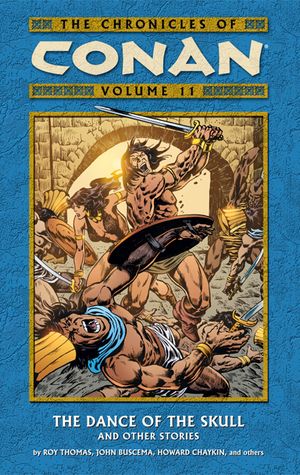 Worse, the story in v. 11 begins in the middle of a storyline — and the storyline is a seemingly interminable pause in the quest of Belit, pirate queen and Conan’s lover, to discover the fate of her father. Conan is sent on several side quests, allowing Thomas to adapt several non-Conan works by Robert E. Howard and giving Conan an opportunity to pick up a sidekick. Well, Zula is more a partner than sidekick, but it’s still Conan’s book.
Worse, the story in v. 11 begins in the middle of a storyline — and the storyline is a seemingly interminable pause in the quest of Belit, pirate queen and Conan’s lover, to discover the fate of her father. Conan is sent on several side quests, allowing Thomas to adapt several non-Conan works by Robert E. Howard and giving Conan an opportunity to pick up a sidekick. Well, Zula is more a partner than sidekick, but it’s still Conan’s book. 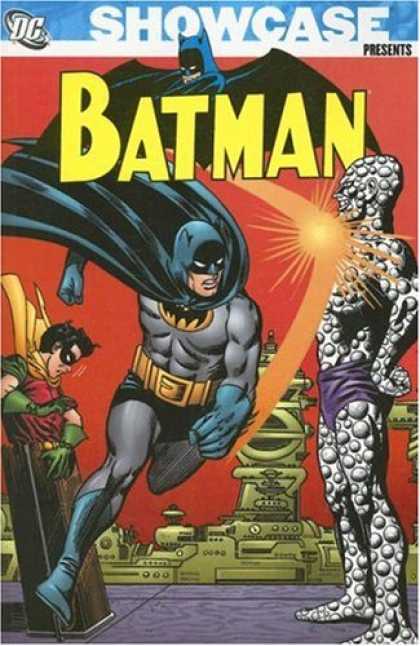 Few of the iconic Bat villains show up Showcase Presents: Batman, v. 2. In nearly 30 issues, the Joker and Riddler show up once apiece. Poison Ivy makes her debut, with two appearances; the back cover also trumpets Blockbuster’s first appearance as well, which should give you some of the star power involved. A villain called the Outsider, who lurked in the shadows of v. 1, steps into the light and turns Robin into a coffin. Batman defeats him because the Outsider makes his machines too simple.
Few of the iconic Bat villains show up Showcase Presents: Batman, v. 2. In nearly 30 issues, the Joker and Riddler show up once apiece. Poison Ivy makes her debut, with two appearances; the back cover also trumpets Blockbuster’s first appearance as well, which should give you some of the star power involved. A villain called the Outsider, who lurked in the shadows of v. 1, steps into the light and turns Robin into a coffin. Batman defeats him because the Outsider makes his machines too simple. 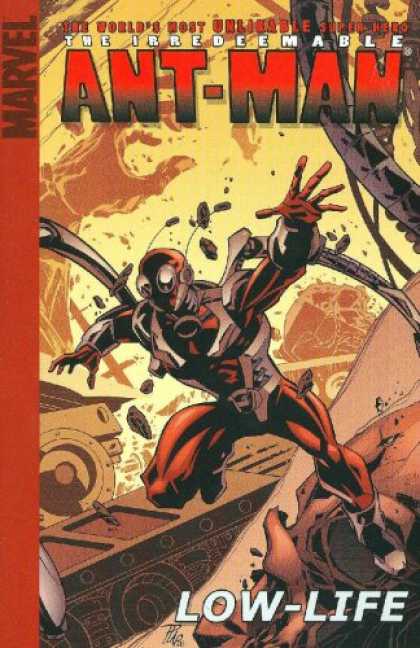 In short, Eric is an awful hero — he would probably deny being a hero, but there is a legacy that comes with the name. He’s an even worse human being. He lies to his best friend’s girlfriend, telling her her boyfriend has a girl on the side. He steals the Ant-Man suit from his friend’s dead body, then puts the moves on the girlfriend, leading to a one-night stand and a pregnancy. He uses his new-found powers to spy on naked women. He even invites a woman he saves from a mugger out to an expensive restaurant, then sticks her with the check.
In short, Eric is an awful hero — he would probably deny being a hero, but there is a legacy that comes with the name. He’s an even worse human being. He lies to his best friend’s girlfriend, telling her her boyfriend has a girl on the side. He steals the Ant-Man suit from his friend’s dead body, then puts the moves on the girlfriend, leading to a one-night stand and a pregnancy. He uses his new-found powers to spy on naked women. He even invites a woman he saves from a mugger out to an expensive restaurant, then sticks her with the check.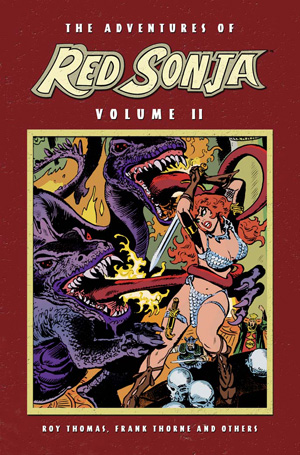 Well, the first thing I noticed when reading The Adventures of Red Sonja, v. 2 was not a buxom warrior woman in a chain mail bikini. One would think that would not be possible, especially given most comic-book artists’ attempts to pioneer the art of making breasts 3-D objects through a combination of will and vivid imagination.
Well, the first thing I noticed when reading The Adventures of Red Sonja, v. 2 was not a buxom warrior woman in a chain mail bikini. One would think that would not be possible, especially given most comic-book artists’ attempts to pioneer the art of making breasts 3-D objects through a combination of will and vivid imagination. (1.5 of 5)
(1.5 of 5) Mantlo’s run is more distinguished, creating Cloak and Dagger and introducing the Owl / Octopus War. Mantlo concentrated on “classic” villains — Electro, the Molten Man, Doc Ock — and brought back older villains with strong connections to Spider-Man: the aforementioned Molten Man, Robot Master, Silvermane. He treated the Kingpin as he had been treated in Daredevil: a force within the city who could be reluctantly used but had his own agenda. He also gave Kraven his mania for “honor” that would lead to his destruction.
Mantlo’s run is more distinguished, creating Cloak and Dagger and introducing the Owl / Octopus War. Mantlo concentrated on “classic” villains — Electro, the Molten Man, Doc Ock — and brought back older villains with strong connections to Spider-Man: the aforementioned Molten Man, Robot Master, Silvermane. He treated the Kingpin as he had been treated in Daredevil: a force within the city who could be reluctantly used but had his own agenda. He also gave Kraven his mania for “honor” that would lead to his destruction..jpg) The core of this X-Factor is from Peter David’s run on the original X-Factor: Madrox, Wolfsbane, and Strong Guy. Also part of the team are M, of Generation X, former X-Forcers Siryn and Rictor, and Layla Miller, a kid who “knows things.” They are opposed by the mysterious and well-heeled Singularity Investigations.
The core of this X-Factor is from Peter David’s run on the original X-Factor: Madrox, Wolfsbane, and Strong Guy. Also part of the team are M, of Generation X, former X-Forcers Siryn and Rictor, and Layla Miller, a kid who “knows things.” They are opposed by the mysterious and well-heeled Singularity Investigations.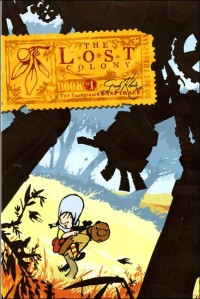 Grady Klein has constructed an odd story, one with several convergent threads. It’s set in the pre-Civil War South on a “secret” island where people of several different races — white, Black, American Indian, Chinese — live together in one community. But when a slave trader form the mainland wanders onto the island, it sets several plots in motion. The governor’s daughter wants a slave to do his chores; the governor, Snodgrass, and Chinese doctor / herbalist, Pepe Wong, want to get the slave trader off the island while keeping him from returning, both of them working at cross purposes. The blacks and Indians are afraid slaves will be brought to the island along with the evils of slavery.
Grady Klein has constructed an odd story, one with several convergent threads. It’s set in the pre-Civil War South on a “secret” island where people of several different races — white, Black, American Indian, Chinese — live together in one community. But when a slave trader form the mainland wanders onto the island, it sets several plots in motion. The governor’s daughter wants a slave to do his chores; the governor, Snodgrass, and Chinese doctor / herbalist, Pepe Wong, want to get the slave trader off the island while keeping him from returning, both of them working at cross purposes. The blacks and Indians are afraid slaves will be brought to the island along with the evils of slavery.